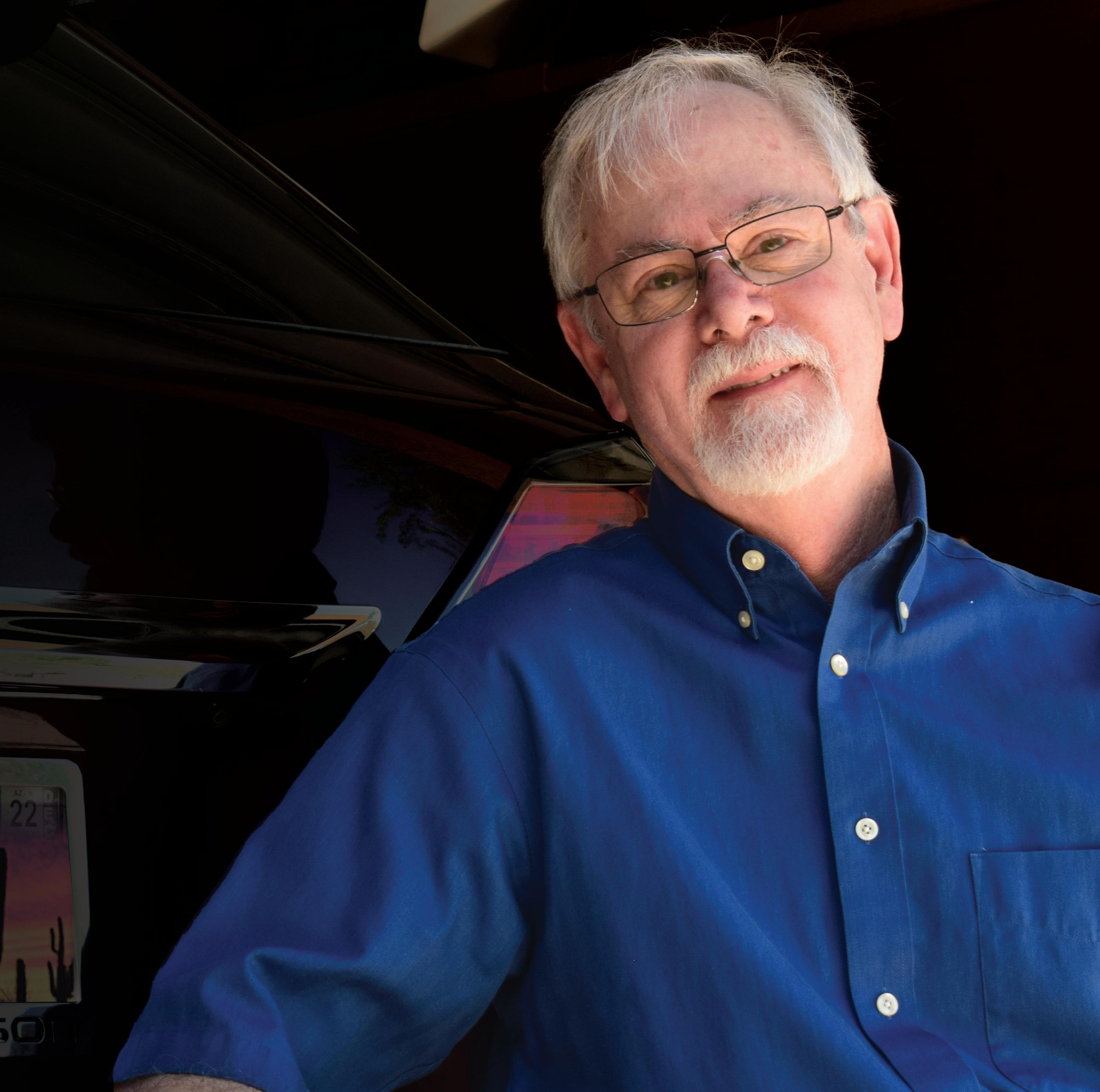
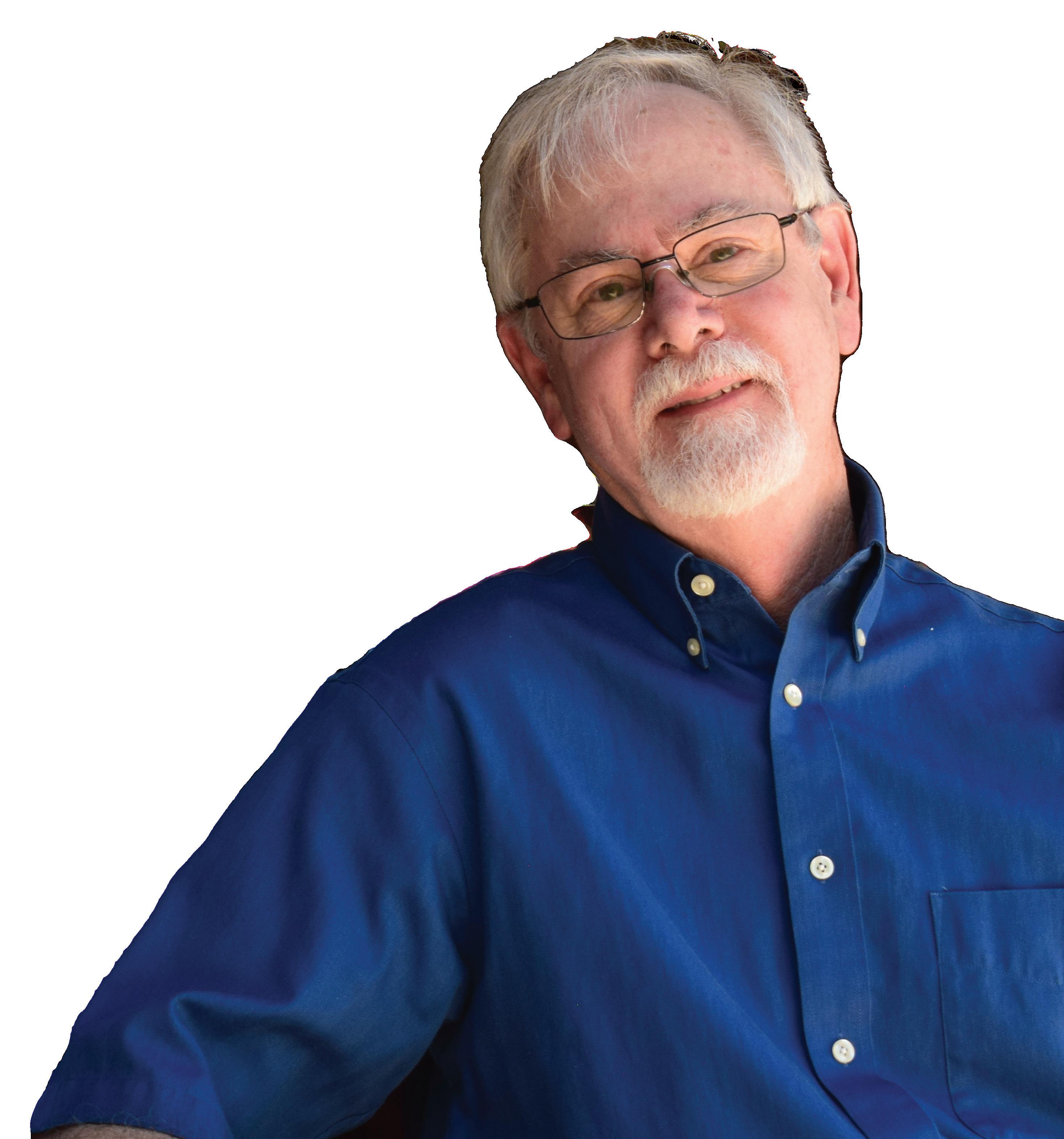
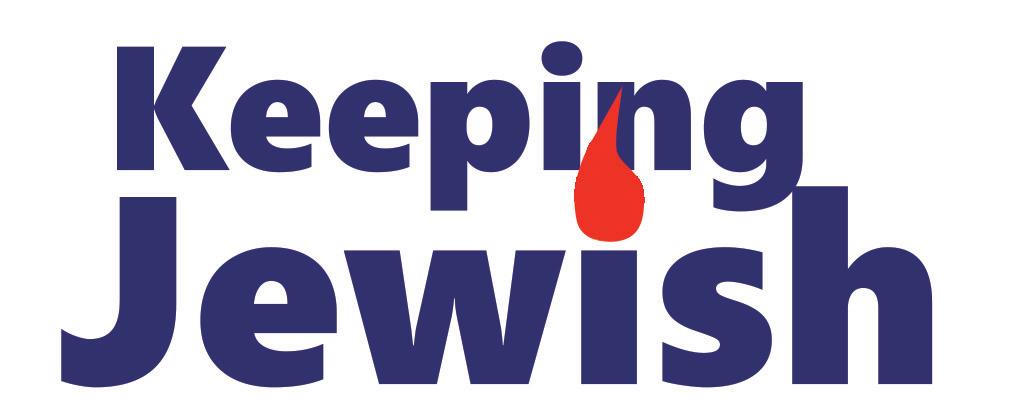

Tradition, Inspiration and Celebration · November 2022 - Cheshvan 5783 Published by Chabad Tucson BS”D THE LIGHTN NG GUYUniversity of Arizona Professor Kenneth Cummins advises NASA, the Air Force and National Weather Service Star of hope Finding a broken necklace restored a whole heart Keeping warm The Lapko family returned to Arizona from Florida Giving thanks 12 Jewish blessings you may not know exist Healthy eating Sticky string beans and the 3-day diet experiment
The Jewish outreach and education network of Southern Arizona 2443 E 4th Street, Tucson, AZ 85719
EXECUTIVE DIRECTOR

Rabbi Yossie Shemtov
REBBETZIN Chanie Shemtov
OUTREACH DIRECTOR
Rabbi Yehuda Ceitlin
PROGRAM DIRECTOR
Feigie Ceitlin
Affiliates: Congregation Young Israel, Chabad at the University of Arizona, Chabad on River, Chabad of Oro Valley, Chabad of Sierra Vista, Chabad of Vail and Lamplighter Chabad Day School of Tucson

EDITOR Rabbi Yehuda Ceitlin
COPY EDITOR Suzanne Cummins
CONTRIBUTING WRITERS
Feigie Ceitlin, Menachem Posner, Mordechai Schmutter, Renee Skudra, Benjamin Weiss, Dina Zirkind
PHOTOS
SPECIAL THANKS Chabad.org
EDITORIAL INQUIRIES OR ADVERTISING
Phone: 520-955-9680
Email: info@ChabadTucson.com
Keeping Jewish is published in print periodically by Chabad Tucson and is distributed free in Tucson and around Southern Arizona

Chabad Tucson does not endorse the people, establishments, products or services reported about or advertised in Keeping Jewish unless specifically noted. The acceptance of adverti sing in Keeping Jewish does not constitute a recommendation, approval, or other representation of the quality of products or services, or the credibility of any claims made by advertisers, including, but not limited to, the kashrus of advertised food products. The use of any products or services advertised in Keeping Jewish is solely at the user’s risk and Chabad Tucson accepts no responsibility or liability in connection therewith.
Note: “G-d” and “L-rd” are written with a hyphen instead of an “o .”This is one way we accord reverence to the sacred divine name. This also reminds us that, even as we seek G-d, He transcends any human effort to describe His reality.
Recently, I received a request typical of what often comes across my desk. It was from the Jewish liaison of a political group asking me to make statements from the pul pit in their support. Of course, they weren’t asking me to openly endorse a candidate, which would put our very status as a non profit at risk. They asked for a more subtle approach.
As a rabbi, you surely hold viewpoints that are in keeping with the political goals of this organization, they posited. What could be improper about merely expressing those views?
As I have repeatedly done to requests from across the political spectrum, I politely and firmly refused.
It’s not that the issues aren’t important — they’re crucial.
It’s not that I don’t have an opinion — I naturally do.
And it’s not that I don’t care enough to engage in the machinations of our political system — I voted proudly in the primaries and already sent my early mail-in ballot for the general election.
Politics and religion: Timely vs. timeless
By Rabbi Yehuda Ceitlin
And what about the Jewish values espou sed by one party or the other? Aren’t tho se important? Yes, they are. But this very stance of rising above partisanship and en dorsements is in itself a crucial value of the Torah.
In ancient times, once every seven years following the Sabbatical Year, the entire Jewish nation — adults and children — would gather in the Holy Temple to listen to the king or ruler speak. It could have been a golden opportunity to keep the people appri sed of the latest policies and laws; it could have been an excellent time for the king to give a stump speech. It could have been the Jewish equivalent of the State of the Union Address.
But it wasn’t.
Instead, the king read directly from a To rah scroll. He read passages that speak of humanity’s obligation towards each other, towards caring for those in need. He read passages that speak of our obligations towards G-d and the heavenly reward that awaits those who do good. He did not give commentary and didn’t highlight passages to make a point that was advantageous to his agenda.
Because politics is timely, while the Torah is timeless.
To cherry-pick passages from a G-d given text, whose message is eternal, to fit the is sues of the day is simply disingenuous. As
crucial as current affairs are — and they truly are crucial — the timeless nature of the Torah simply renders it incompatible with the political stances of any stripe.
As a rabbi, my goal is to share the time less wisdom of the Torah — without using it as a tool to a political end.
The Rebbe — Rabbi Menachem M. Sch neerson, of righteous memory — once wro te to a rabbinical school in Australia, “You should be sure to restrain yourself from gi ving the Yeshiva a political stance or a parti san character because Torah learning is not associated with politics or partisanship.”
He said that the fact that the Torah was given at Mount Sinai to a crowd of six hun dred thousand people, from the most scho larly to the simplest, shows how the Torah is meant to be accessible to all.
“We are required to not introduce trivial matters which sometimes frighten people away, whether they are particular parties or politics, losing the opportunity to be connec ted with the Living Torah and its command ments,” he wrote.
Torah is the timeless, ever-relevant, everunchanging heritage of every Jewish per son. We may disagree on politics, but hope fully, we can all agree on that.
- Rabbi Yehuda Ceitlin is the Outreach Director of Chabad Tucson
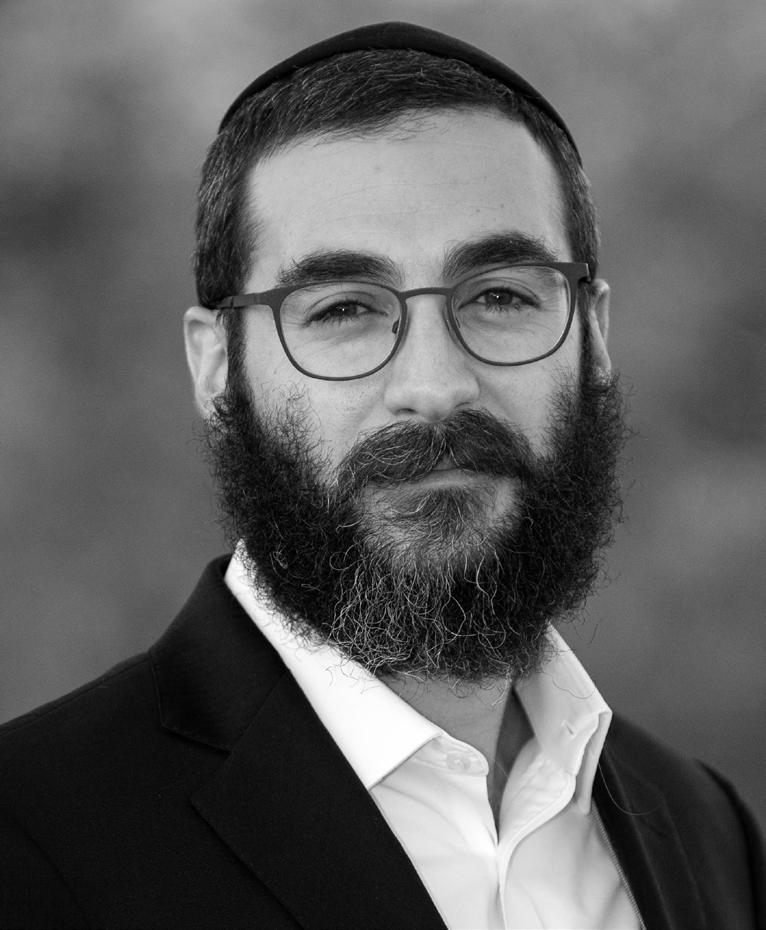
| November 2022 | Keeping Jewish
OPINION 2
religion:
Year of Hakhel provides opportunity to gather Torah study groups in the synagogue and at home
Every seventh year is a “Hakhel” year - and this Jewish year of 5783 is one. Hakhel li terally means gathering. In ancient times, during such a year, Jews would stream to Jerusalem to unite in the Holy Temple, and the king would read to them special selec tions from the Torah.
The essence of this mitzvah, gathering to gether with fellow Jews for Torah study and inspiration, remains relevant. Gatherings big and small will be held in Jewish commu nities around the globe.
An ideal location for such a gathering is in a synagogue or another place where Torah is studied since it’s the closest we have to the Holy Temple. But your living room, bac kyard, classroom or boardroom work as well.
The most important point is that a gathe
ring should be centered around the study of Torah. And if it can’t be done in person, hold a virtual Hakhel with friends on the phone, Zoom, Facetime or WhatsApp.
Not every Hakhel gathering needs to be offi cially billed as such. If you are invited to a work meeting or are otherwise going to be among others, just start the meeting with a few words of Torah, and presto, it’s become a Hakhel.
Some tips to craft your Hakhel program:
● Keep it relevant: Think about what’s going on in the Jewish calendar so you can incor porate a study of its significance into the program. An obvious option is to learn the weekly Torah portion.
● Make it fun: Invite your friends over to
New course to explore 25 questions about G-d
Classes will be given in Tucson, Vail and on Zoom
A new six-week adult education course from the acclaimed Rohr Jewish Learning Ins titute (JLI) will unpack Judaism’s unders tanding of G-d while providing fresh, pro found answers to common questions about the Creator.
How did G-d come to be? Is G-d a He, a She, or an It? Does G-d have feelings? If G-d has foreknowledge of all events, do we have free choice? Is there a place in Judaism for dou bts about G-d? These are just some of the twenty-five questions addressed in these classes.
Jewish culture and the Jewish people’s outlook on life are indelibly shaped by the classic Jewish understanding of G-d. “My G-d: Defining the Divine” is a one-of-a-kind course that brings to light the Jewish un derstanding of G-d, from which Judaism and Jewish identity inevitably flow.
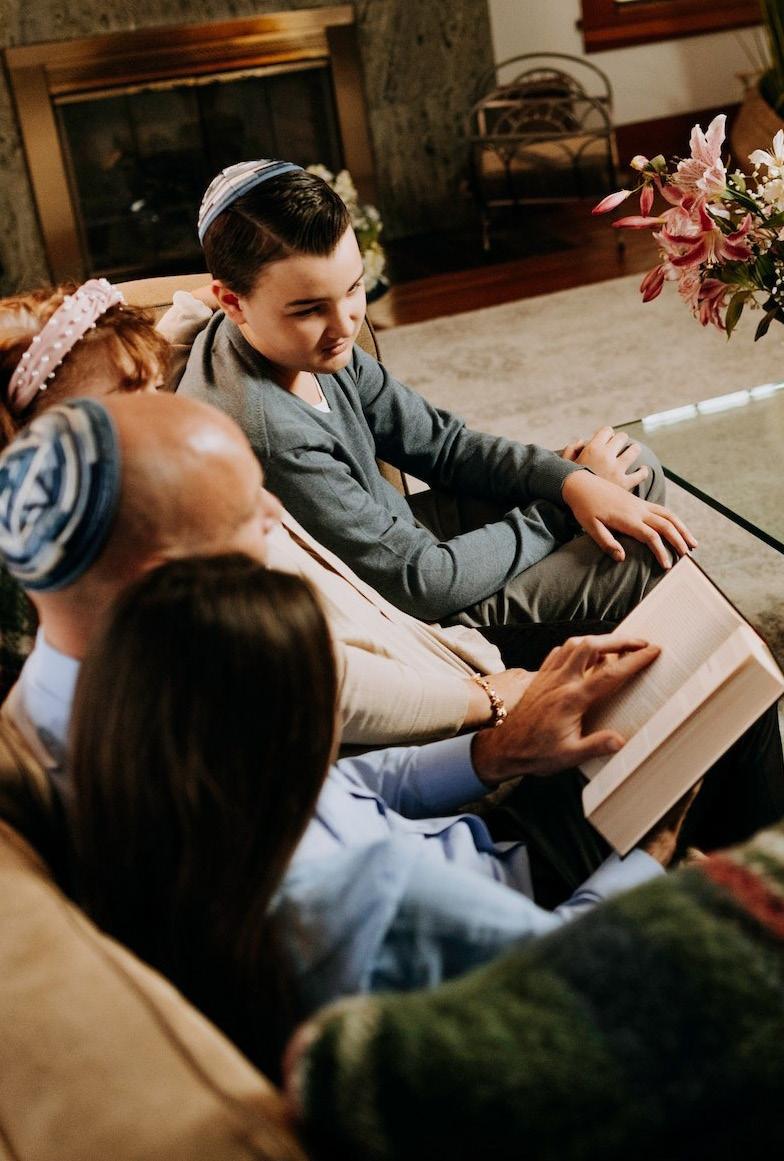
When the course kicks off in November, its fast-paced lessons will provide a com prehensive interpretation of Jewish mo notheism. The discussions will probe philo sophical topics, but the course is anchored in real life and offers accessible answers for students of all backgrounds.
Classes will be taught both in-person and on Zoom by Rabbi Yehuda Ceitlin of Chabad Tucson and Rabbi Sruly Shemtov of Chabad of Vail. They believe this course is a perfect offering for anyone with sincere questions about G-d or who just seeks an enhanced understanding of Judaism’s approach to this core topic.
“These are questions we hear all the time,” the rabbis said. “This course will be an ad dress where you can get straight answers to all the big questions you might have about G-d.”
As with other JLI programs, the course is designed to appeal to people at all levels of knowledge, including those without prior exposure to Jewish learning. All JLI cour ses are open to the public, and attendees need not be affiliated with a particular sy nagogue or house of worship.
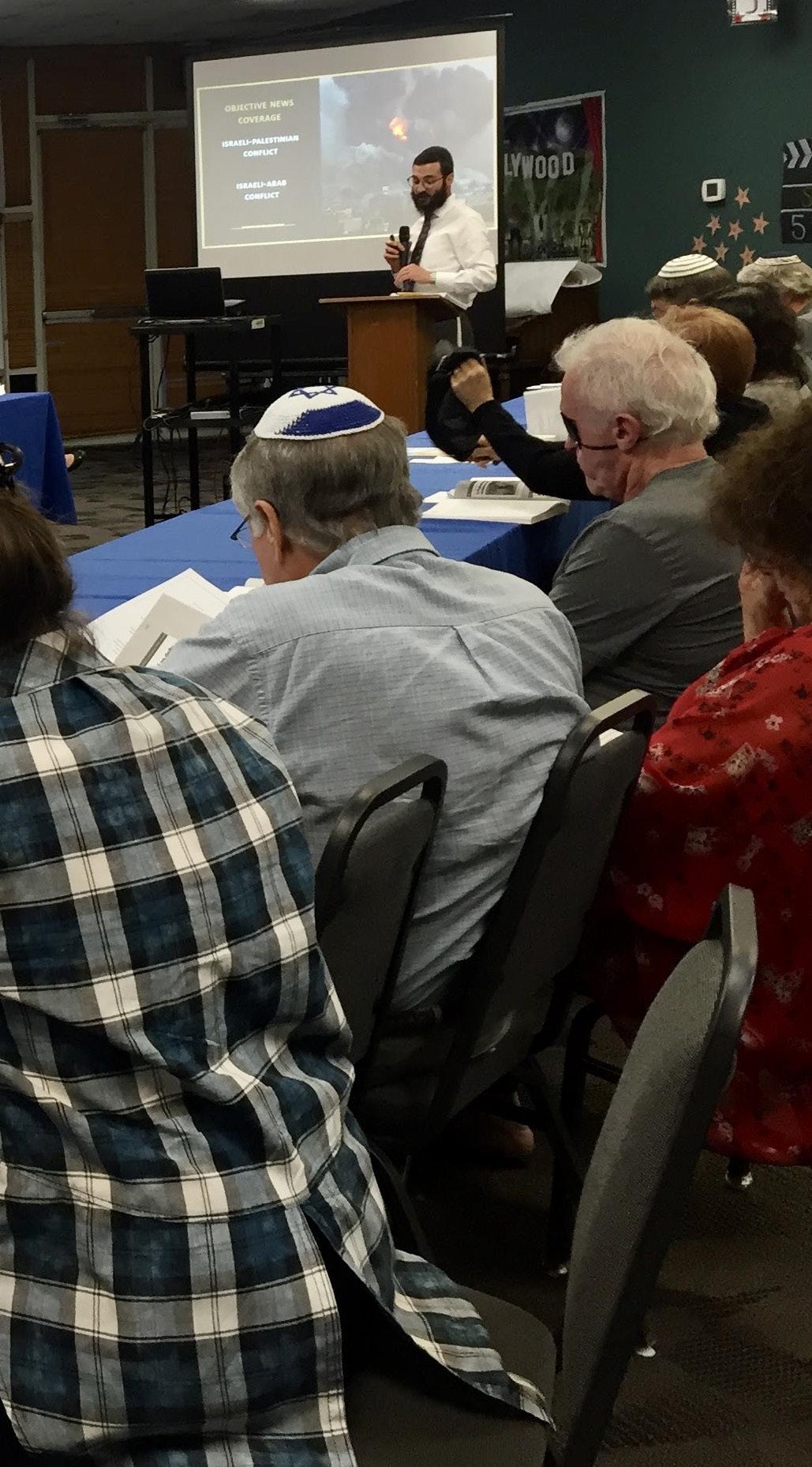
TUCSON CLASS: 6 Tuesdays, starting November 8 at 7:00 PM at the Tucson JCC, 3800 E River Rd, Tucson, AZ 85718. Enroll at www.Chabad Tucson.com/JLI
VAIL CLASS: 6 Tuesdays, starting November 8 at 6:30 PM at Esmond Station Elementary School, 9400 S Atterbury Wash Way, Tucson, AZ 85747. Enroll at www.JewishVailAZ.com/ JLI
watch a Torah-related video, or throw a the med party that includes some Torah lear ning, which can be a wonderful springboard for a lively discussion.
● Make it yum: Food brings people together. Treat participants to some good food (kos her, of course) and recite blessings before partaking.
● Call on us: You don’t need to be a rabbi or educator to host a successful Hakhel gathe ring. But if you’d like a guest speaker, consi der contacting Chabad. A rabbi or rebbetzin will be happy to join. After all, it’s a pleasure meeting people and doing something positi ve for our world.
To receive a monthly idea to organize a program, visit Chabad.org/Hakhel
Keeping Jewish | November 2022 |
timeless NEWS
3
PROFILE
THE LIGHTN NG GUY
Contrary to popular lore, Tucson is not the U.S. lightning capital of the world. That said, Tucson’s short-but-intense storm sea son, small localized storms, and high cloud bases for clear viewing make it one of the most desirable locations in the world for viewing and photographing thunderstorms and lightning.
Given the observational opportunities here, it is not surprising that University of Ari zona researchers engaged in the study of lightning and its properties. Of course, they were not the first Americans to be fascina ted by the science of lightning. Benjamin Franklin conducted lightning experiments in the early days of the formation of the United States.
It is also not surprising that one of the top experts on lightning in the world is based in Tucson. Dr. Kenneth Cummins is a Re search Professor in the Department of At mospheric Sciences at the University of Ari
 By Benjamin Weiss
By Benjamin Weiss
zona and is the author of over 100 scientific papers. He also holds 9 U.S. patents and many related international patents in the field of lightning detection.
In 1989, he moved to Tucson with his wife, Suzanne Cummins, now an Emeritus Se nior Lecturer at the Eller College of Ma nagement at the University of Arizona and Copy Editor of Keeping Jewish. Upon arrival in Tucson, Dr. Cummins joined an 18-person company called LLP, Inc., which was the brainchild of three University of Arizona lightning researchers. The com pany was formed to evolve lightning detec tion technology and then commercialize its applications.
Dr. Ken Cummins was not an obvious fit for the company. The president of LLP at the time said he didn’t think Dr. Cummins was the right person to head up their enginee ring team. “Many of the company’s needs were in manufacturing engineering, and
my expertise was in electrical engineering,” Dr. Cummins admits. “And I knew nothing about lightning at the time.”

He was formally trained in statistical signal processing, modeling, and instrumentation. He spent 13 years in the neurosciences, where he was involved in basic and applied research, developed neuro-diagnostic methods and instrumentation, and served as a staff scientist for Nicolet Biomedical Instruments.

In studying the evoking potentials of the brain, Dr. Cummins developed tests to mea sure the brain and nervous system’s respon se to various inputs, including sound, site, and electric stimulation. Even today, tests that he helped develop and perfect in the 1980s are used for diagnostic purposes for patients with diabetes, multiple sclerosis, and various neuromuscular diseases.
But Dr. Cummins saw what others even
tually grew to understand – that taking the evoked potentials of the brain had enor mous similarities to taking lightning mea surements of the earth. “The Divine thing about electromagnetism is its consistency,” he says.
So he was appointed Vice President of En gineering of LPP and helped develop the National Lightning Detection Network (NLDN), which uses 100 ground-based sensing stations across the United States to instantaneously detect electromagnetic signals given off when lightning strikes the earth’s surface.
“If you watch the weather reporting on tele vision and see those nifty graphics showing how dense the lightning is during a storm, that likely comes from data accumulated by the NLDN,” he says about the network ow ned by the Finnish company Vaisala. Vai sala purchased LLP/Global Atmospherics in 2002, which by then employed over 100 Tucsonans.
| November 2022 | Keeping Jewish
4
Lightning bolts crash down on city lights in Tucson, Arizona * Photo: saguaropics / iStock
The unlikely entry of Dr. Ken Cummins into atmospheric science
Dr. Cummins says information about light ning plays an ever-growing role in climate studies, weather forecasting, detection of fo rest fire ignition, large-venue public safety, rocket launch safety, and electrical utility management, among other things.
“People ask how often lightning strikes a given place,” Dr. Cummins says. “For the past 30 years, we have continuously mea sured the number of lightning flashes that hit every square mile in the U.S. In parts of Oklahoma and Florida, lightning will strike over 30 times in a given square mile every year. In some places in the Pacific Northwest, lightning may only strike a onesquare-mile area once in ten years.”
He says that one of the most interesting components of lightning research involves the everyday problems of bringing electric power to our homes. Lightning can fracture insulators on transmission towers, burn up transformers near substations, crack wind turbine blades, and break down power li nes, all of which create costly problems and power interruptions. Dr. Cummins studies lightning attachments to these structures and advises utilities on the development of protection methods and standards.
“Lightning travels many miles through the air to reach the ground,” Dr. Cummins says. Tennis shoes, car tires, or huge trucks cannot stop it – or, as one colleague said,
“lightning laughs at your shoes and tires...” We can only hope to convince it to attach to something that takes its current safely to the ground.”
In the last decade and a half, Dr. Cumm ins has engaged in significant lightning research for NASA (the National Aeronau tics and Space Administration), the U.S. Air Force, the National Science Foundation (NSF), and NOAA (National Oceanographic Atmospheric Administration), which inclu des the National Weather Service.
He is currently a member and past chair person of NASA’s Lightning Advisory Panel (LAP), which sets the thunderstorm-related rules for rocket launches. “It was establis hed based on experience and the recogni tion of how badly things can go wrong due to undetected atmospheric electricity,” he explains.
One example is NASA’s launch of Atlas/ Centaur AC-67 from the Cape Canaveral Air Force Station (CCAFS) in Florida on March 26, 1987. The vehicle triggered light ning 49 seconds after launch and the rocket blew up. Luckily, this was not a humancrewed flight, but it was costly and a total loss. NASA recognized they had to establish tighter criteria for rocket launches to pro tect both financial and human loss in the future.
The Lightning Advisory Panel was subse quently established and still functions to continuously evolve rules for rocket launch safety. “Our mandate is that no rocket is launched that has even a 1 in 10,000 chance of any harm from atmospheric electricity or lightning. There is no room for error in that standard,” Dr. Cummins states.
Dr. Cummins and his collaborators recently constructed a lightning attachment system on top of a tower at Kennedy Space center. “It’s not often that I try to have equipment get struck by lightning, but that is the exact goal of this experiment,” he says. The tower is set up to “capture” nearby lightning in order to directly measure the electrical cu rrents and electromagnetic fields of strikes.
His team “watches” the lightning strike the tower using a 1-million-frame-per-second camera. The findings in this study serve to test the accuracy of existing remote measu rement systems and to provide new insights into the microscopic detail of lightning as it attaches to rocket-sized towers.
Despite all his expertise, Dr. Cummins says lightning still manages to surprise him. “It is capricious, somewhat unpredictable, and has counterintuitive properties,” he says. “I think that is more like the human brain than anyone might have expected.”
Remembering Dr. Thomas Meixner
The appointment of Dr. Kenneth Cum mins at the University of Arizona is as a part-time Research Professor in the Hydrology and Atmospheric Sciences Department (HAS). Horrifically, the department chair, Dr. Thomas Meixner, was killed on October 7, 2022 by a student who had been expelled the previous semester for threatening behavior in the classroom.
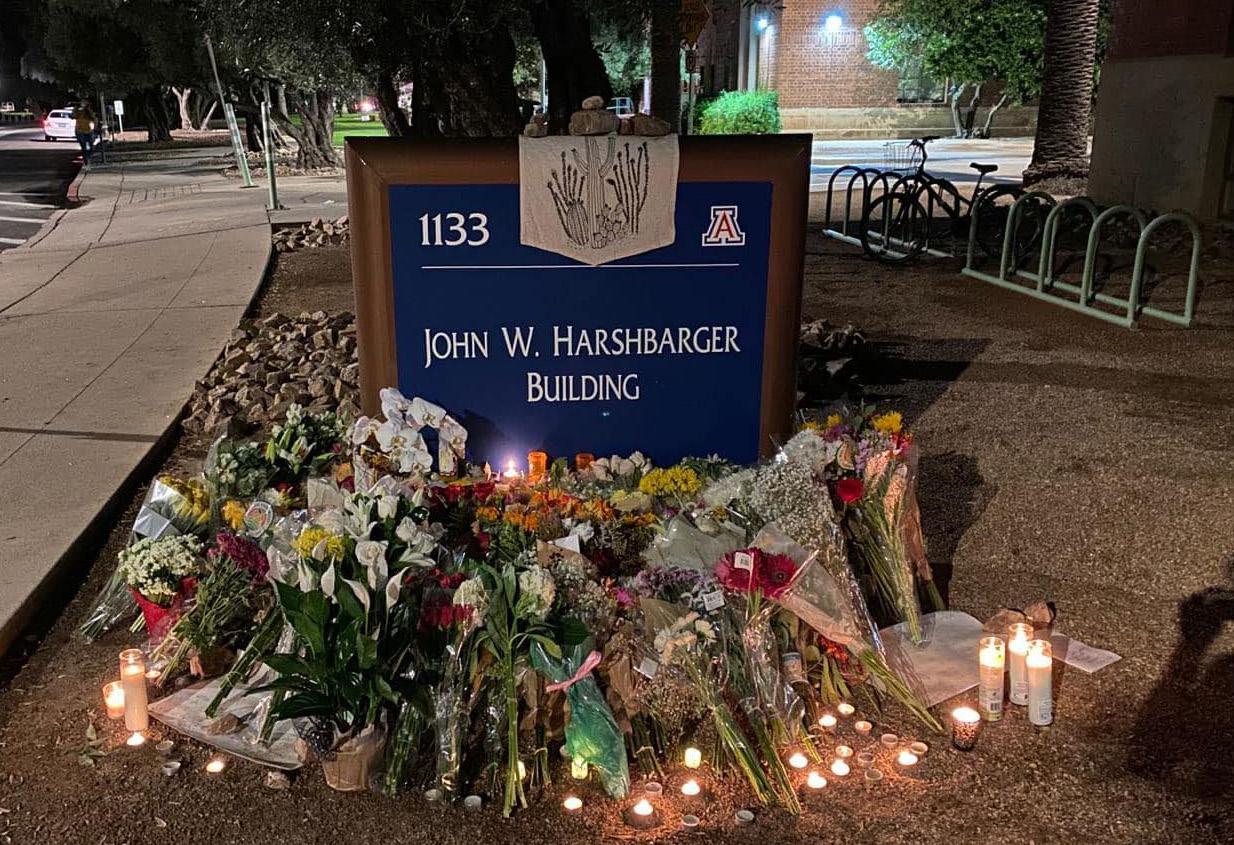
“Tom was a committed, brilliant aca demic and a wonderful colleague who loved hearing about the work of the other faculty members and sharing his own,” Dr. Cummins said. “The loss of this great colleague is heartbreaking for all who knew him.”
The University of Arizona commu nity mourns the loss of Meixner, highlighting the professor’s work to “educate the next generation of water researchers and make our world’s most precious resource safer for all.” It also announced the creation of the Dr. Thomas Meixner Memorial Fund to honor his legacy.

Keeping Jewish | November 2022 | 5
Credit: UAHASSADr. Ken and Prof. Suzanne Cummins with their family
blessings you may not know exist
By Dina Zirkind
When we recite a blessing prior to eating, we acknowledge that the earth and all living things belong to G‑d, and that G‑d is the source of all sustenance. Reciting a blessing allows us to infuse a seemingly mundane activity with holiness. We recite blessings on many different occasions—some of them ordinary and others rare and extraordinary. By learning about them, you’ll be able to express gratitude to G‑d the next time you experience any of the events below.
1. Over the rainbow
Blessed are You, L-rd our G d, King of the Univer se, who remembers the Covenant, is faithful to His Covenant, and keeps His promise.
When a person notices a rainbow, he or she recites this blessing. It’s a special reminder that just like in the times of Noah, we can correct our ways.
2. When the world shakes
Blessed are You, L rd our G‑d, King of the Universe, whose power and might fill the world.
Thunder, tornadoes and earthquakes are examples of G‑d’s awesome power. By re citing this blessing, we acknowledge that they are indeed G‑dly acts and an expres sion of the power of our Creator.
3. Seeing lightning or shooting stars
Blessed are You, L-rd our G d, King of the Univer se, who re-enacts the work of creation.
One recites this blessing upon seeing light ning (the first time during a storm), a shoo ting star, comet, earthquake, volcano, tor nado, hurricane, ocean or mountain (for the first time in 30 days).
4. When we do something for the first time (that year)
Blessed are You, L-rd our G d, King of the Uni verse, who has granted us life, sustained us and enabled us to reach this occasion.
This blessing, the Shehecheyanu, is recited prior to doing a mitzvah or something joyful for the first time in a given year. It is also recited prior to (or afterward, according to some customs) eating a seasonal fruit such as a fresh fig, date or pomegranate for the first time it came into season each year. This common blessing is also recited on many festivals.

5. For good news about ourselves and others
Blessed are You, L-rd our G d, King of the Univer se, who is good and does good.
By reciting this “Hatov v’hameitiv” blessing when we hear good news concerning both ourselves and others, we are able to thank G‑d for every detail of our lives—from the ordinary to the most extraordinary.
6. When we hear bad news
Blessed are You, L-rd our G d, King of the Univer se, the true judge.
One recites this “Dayan ha’emes” blessing upon hearing bad news—for example, the death of a friend or well known person—or if one personally witnesses bad news.


7. Spicing up our lives
Blessed are You, L-rd our G d, King of the Univer se, who creates various kinds of spices.
You may be familiar with this blessing be cause of its presence in the Havdalah ce
| November 2022 | Keeping Jewish
JUDAISM 101 6
remony, which marks the end of Shabbat and the return to the ordinary week. Why do we say this blessing prior to smelling be samim—fragrant fruit or spices? According to the teachings of Kabbalah, the soul is affected by only one of our senses: the sen se of smell. Thus, smelling fragrant spices comforts the soul as it makes the difficult transition from the holy Shabbat to the regular week. During Havdalah, we tradi tionally use cloves and say this blessing. During the ordinary week, we differentiate between various pleasant scents with bles sings that include “Boray atzay besamim,” “Boray isbay besamim” and “Hanoten Rey’ach tov bapayrot.”
8. The one for wine (or grape juice)
Blessed are You, L-rd our G d, King of the Univer se, who creates the fruit of the vine.
Wait, why is this famous blessing on the list? Isn’t it this blessing said every week as part of Kiddush and Havdalah? Yes, but not everyone knows that we make this blessing every time we drink wine, even when it is not for ritual purposes.
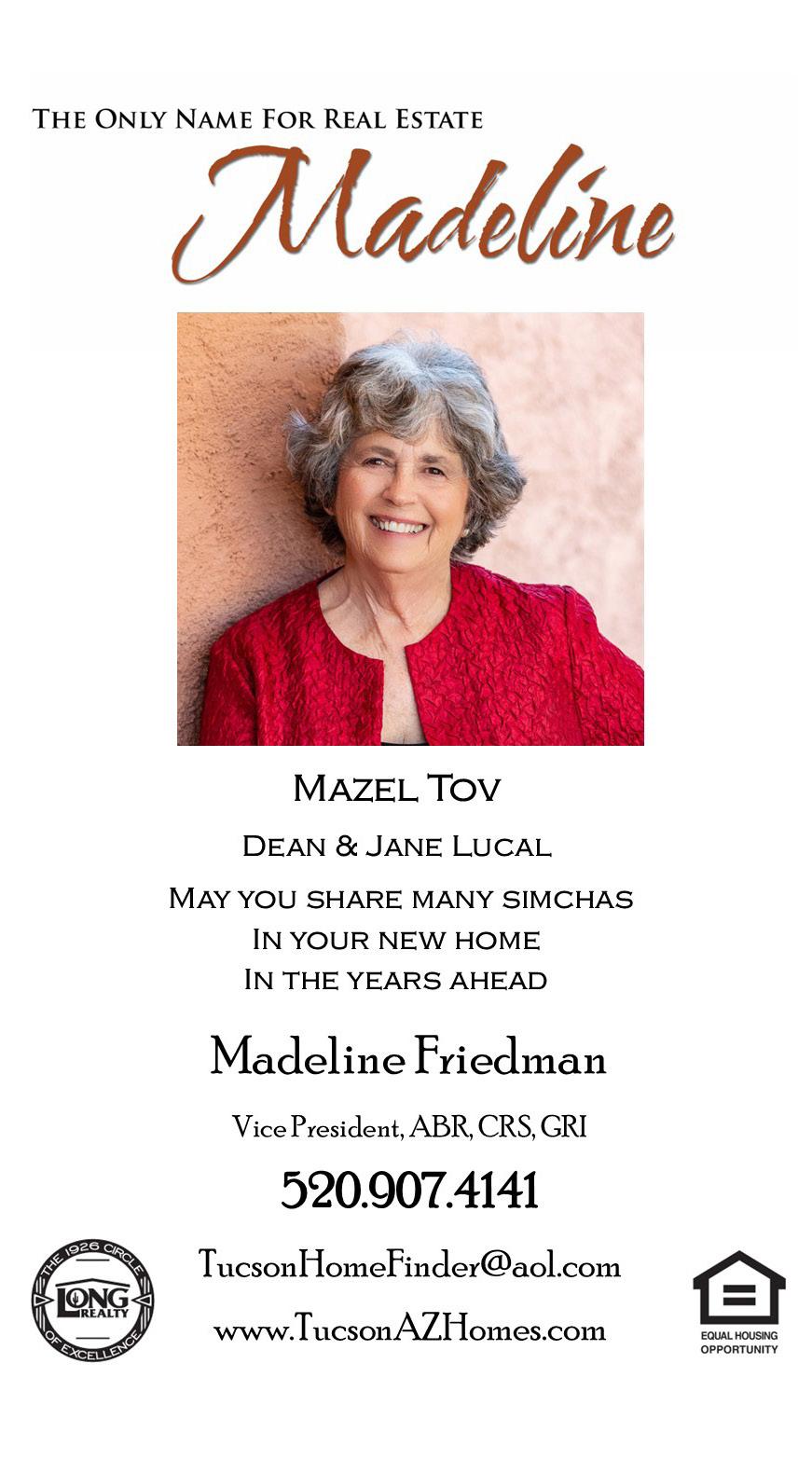
Grape wine is unique among fruit juices. Whereas the juices of other fruits warrant the general Shehakol blessing, the juice of the grape gets its very own special bles sing. This is because, as King David says, “it gladdens the heart of G‑d and man.” It was not by accident that this special drink was chosen to be poured on the Temple altar and become so central to so many Jewish rituals.
9. Upon escaping from danger
Blessed are You, L-rd our G d, King of the univer se, Who bestows kindness upon the culpable, for He has bestowed goodness to me.
Upon hearing the blessing, respond Amen, followed by: May He who has bestowed be neficence upon you always bestow every be neficence upon you.
The reasons to thank G‑d for his kindness are broken up into four categories: crossing the ocean (including via a flight); crossing the desert (which includes all life threa tening situations, such as a car accident or burglary); recovering from a serious ill ness; and being released from prison. One should also say this blessing upon reaching
a desired destination safely after traveling through a desert, overseas or via plane. This blessing should be said in the presence of a minyan (a quorum of ten Jewish adults).
10. Remembering: ‘Isn’t spring wonder ful?’
Blessed are You, L-rd our G d, King of the univer se, Who has made nothing lacking in His world, and created in it goodly creatures and goodly trees to give humankind pleasure.
This blessing is said only one time a year, upon seeing blossoming fruit trees for the first time during the month of Nissan. It is best to say this blessing upon seeing two trees, but it is permissible to say it upon seeing one.
11. The blessing said once every 28 years
Blessed are You, L-rd our G d, King of the Univer se, who re-enacts the work of creation.
Once every 28 years, the sun returns to the position that it was in at the moment when it was created, on the fourth day of creation. Thus, we say a special “Birchas Hachamah” blessing to mark this rare event, acknowled ging that the sun allows for the existence of life on earth. Its rays shine upon us daily, allowing plants to grow and produce the air we breathe.
12. Upon exiting the restroom
Blessed are You, L-rd our G d, King of the Uni verse, who has formed man in wisdom, and crea ted within him numerous orifices and cavities. It is revealed and known, before the Throne of Your Glory, that if but one of them were to be blocked or one of them were to be opened, it would be im possible to exist for even a short while. Blessed are You, L-rd, who heals all flesh and performs wonders.
By saying this blessing, we thank G‑d for allowing our bodies to function properly and thus allowing us to continue living our lives in good health.
- Dina Zirkind received her B.A. in English from the University of Pennsylvania. She enjoys com bining her interest in journalism with her passion for sharing Jewish wisdom. Dina currently lives in New York City with her husband.
Keeping Jewish | November 2022 | 7
Welcome to town: Josef Lapko
By Benjamin Weiss
Josef Lapko was born in Russia and rai sed in the holy land of Israel. In his range of experience, he has run a high-profile event production company, worked as a project manager at Intel, and managed the Aish HaTorah World Center in Jerusalem.
He is now the Director of Development and Projects at the real estate investment firm The Wildcat Group, having previously held leadership roles in developing residen tial real estate projects in Ohio and Florida.
He is married to Racheli and is the father of Adi (14), Ayelet (12), and Ray Reuven (2).
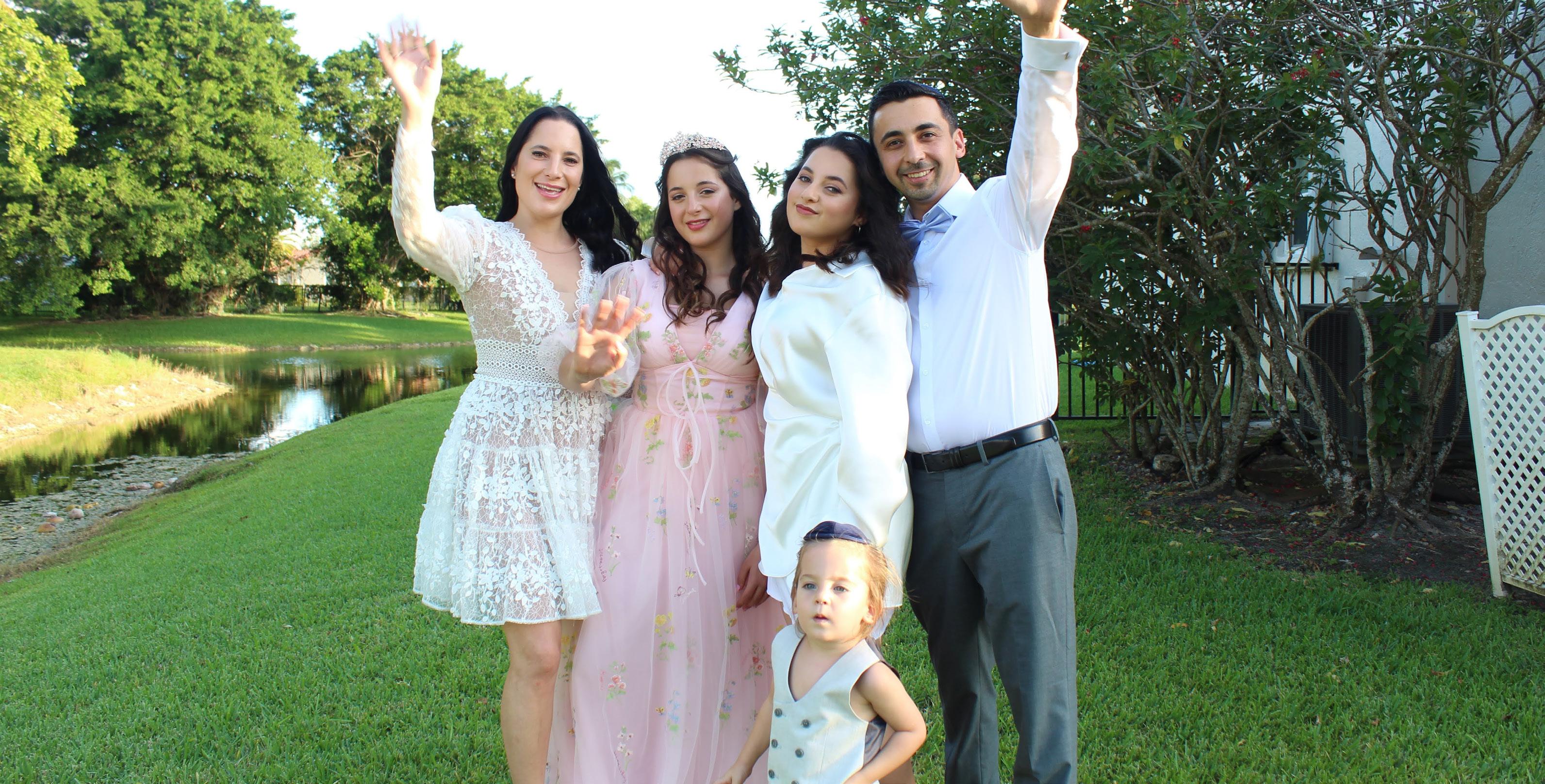
How long have you been in town?
Around two months.
Where did you move from, and how is Tucson compared to it?
We came from Israel to the U.S. in 2015. We started in Ohio, moved to Tucson, then Boca Raton in Florida, and now back to Tuc son. As you can see, we try to stay in warm places!
Currently reading/learning:
The Guide for the Perplexed (Maimoni des).
Favorite Mitzvah/holiday:
Sitting around the table and singing “Zmirot” (melodies) with the kids, extending the pleasure of Shabbat.
Cherished Jewish memory:
Being sworn into the IDF at the Western Wall. With a Torah book in my right hand and weapon in my left, I yelled at the top of my lungs, “... to devote all my energies, and even sacrifice my life, for the protection of the homeland and the liberty of Israel.”
Jewish app on phone:
OnYourWay, a full library of Jewish books.
Go-to Yiddish or Hebrew word:
Yalla! It’s an Arabic word that is practi cally Hebrew by now. It means “Come on!” but depending on the context, it can mean many things.
Historical Jewish figure:
Rabbi Abraham Isaac Kook, Ashkenazic Chief Rabbi of British Mandatory Palestine and a father of religious Zionism.
Chabad:
The center of kindness around the globe.
Tzedakah:
When I’m confronted with something that is troubling someone, I help them get through it, whether that’s giving meanin gful advice or a pat on the back.
Happiness:
Happiness is being around the people I love and helping them be the best version of themselves.
Hobbies:
Hosting, cooking and baking; hiking; tra veling, and video creation.
Comfort food:
Sweet potato cream soup.
Kvetch:
When I see our brothers or sisters being hurt or manipulated, especially when done to one another.
Kvell:
Having conversations in the car with my kids. I love when they aren’t plugged into devices, paying attention to the sights around them, and asking questions. These are the best moments.
Claim to fame:
I hold a black belt in Taekwondo (a Ko rean form of martial arts), which is where I met my wife!
Looking forward to…
My next visit to Israel and meeting my grandfather, “Saba Reuven.” He was a gene ral in the Red Army, survived the Holocaust, worked as a city architect and is my perso nal mentor.
| November 2022 | Keeping Jewish
8 LOCAL
KOSHER
Sticky string beans
 By Feigie Ceitlin
By Feigie Ceitlin
INGREDIENTS:

2 lb green beans trimmed
2 T olive oil
3 large shallots, thinly sliced
3 cloves garlic, thinly sliced
½ red pepper cut into ¼ inch dice
½ yellow pepper cut into ¼ inch dice
1/3 c honey
3 T Soy Sauce
1 T cornstarch
being done with plugged sights These (a Ko where I meeting my gene Holocaust, perso
DIRECTIONS:
In a large pan, heat the olive oil. Add the shallots and garlic and cook for 2-3 min un
til garlic is fragrant but not burnt. Add the peppers and sautee for another 3 minutes. Add the honey.
In a small bowl, dissolve the cornstarch in the soy sauce. Mix until smooth, add to the skillet and bring to a simmer so the sau ce thickens.
Add the green beans and toss. Cover and cook for a couple of minutes until string beans cook through. Keep on tossing until desired consistency.
Bon appetit!
— Feigie Ceitlin is the program director of Cha bad Tucson. Inspired by the recipe in Kosher by Design Short on Time.


Keeping Jewish | November 2022 |
9
COMMUNITIES
13 facts about Hungarian Jews
 By Menachem Posner
By Menachem Posner
1. There are 80,000 Jews in Hungary
Hungary is home to approximately 80,000 Jewish people, most of whom are native Hungarian Jews. Since some Hungarian Jews intermarried as early as the 19th cen tury and many chose to hide their Judaism after the Holocaust, it is very hard to ascer tain accurate numbers as many Jews may have been “under the radar” for generations.
2. Most of them live in Budapest
Budapest’s seventh district was historica lly the Jewish quarter and the site of the Nazi-era Ghetto, into which 70,000 Jews were crammed. Today, the quarter is still home to historic synagogues, kosher restau rants, a mikvah, as well as several Chabad Houses. However, Jewish people are scatte red all across the greater metropolitan area, from the villas in the hills of Buda to the stately apartment buildings of Pest.
3. There were Oberlanders and Unterlanders
Jews living in the western highlands, the Oberlanders, tended to be culturally similar to their compatriots in Austria and Germany, speaking German-tinged Yiddish and following Ashkenazic customs. Conver sely, the Unterlanders, from the eastern lowlands, tended to be much more aligned with the Chassidic communities in Galicia, sharing their dialect of Yiddish and more cloistered ways.
4. Jewish Hungary had its own bor ders
As borders moved and empires rose and fell, Jews created conceptual borders of
their own, which sometimes happened to coincide with those drawn by monarchs and generals. Thus, Jewish Hungary extended deep into what is now Ukraine and Roma nia on the west, Slovakia on the north, Aus tria on the east, and Serbia on the south. This explains why some of Hungary’s most prominent leaders—such as the Chatam So fer in Pressburg (Bratislava, Slovakia), the Minchat Elazar in Munkach (Mukachevo, Ukraine), and the rebbe of Satmar (Satu Mar, Romania)—did not even live in what we now consider Hungary.
5. Hungary was originally Sephardic
While Hungarian Jews today are pre dominantly Ashkenazim, the Hungarian Jewish community during much of the 16th and 17th centuries was predominantly Sephardic, as much of Hungary was then part of the Ottoman Empire. With the de feat of the Ottomans, the Jewish communi ty was decimated. In time, an Ashkenazic community sprang up in their place.
6. The “National Anthem” of Hungarian Jewry is about a bird
The Chassidic movement came to Hun gary, in part, due to the pioneering efforts of Rabbi Yitzchak Isaac of Kalev, an early Chassidic master (1751–1821). He made famous the song Szól a Kakas Már, which he adapted from a Hungarian folk song he “purchased” from a shepherd. Beginning in Hungarian with a vision of a beautiful bird at sunrise, it ends in Hebrew by longingly praying for the arrival of Moshiach. Today, this song is the unofficial anthem of Hunga rian Jewry, sung at communal events, cele brations, and ceremonies.
| November 2022 | Keeping Jewish
10
A 1929 photo of Kiraly Utca, the main street of the traditionally Jewish Seventh District in Pest (credit: Imre Kinszki)
7. They officially broke into three sects around 1870
As the enlightenment swept through Wes tern and Central Europe, the Hungarian Jewish community was torn. Some wanted to follow the German Jews, who were fast reforming (or abandoning) the traditions of their forefathers, while others wished to maintain their loyalty to orthodoxy as it had been practiced for generations.
After much internal strife, the community officially broke into three parts, recognized by the Austro-Hungarian monarchy: Or thodox (who clung tenaciously to tradition), Neolog (which promoted religious reforms and cultural assimilation), and Status Quo (a smaller group who did not follow the lea ders of either group).
8. Sixty percent of Hungarian Nobel laureates were Jewish
Depending on what criteria are used, one can say that between 14 and 21 Hungarians have been awarded Nobel Prizes. Of them, approximately 60% are either Jewish or of Jewish descent. This is astonishing when one considers that Jews comprise less than 1% of the Hungarian population today and have never constituted more than 10% of the population.
9. Short German family names are popular
Hungarian Jews may have last names that are Hungarian (such as Farkas, which means “wolf”), as well as “typical” Jewish last names such as Goldstein and Ro senbaum etc. However, prevalent with Hun garian Jews are German language monosy llabic, descriptive names such as Schwartz (black), Weiss (white), Roth (red), Gross (big), Klein (small), and Stark (strong).
10. Hungarian Jewry was nearly de cimated in 1944
While Fascist Hungary aligned itself with the Germans, and Jews were heavily discri minated against, Hungarian Jews were lar gely spared from mass extermination until the German invasion in March of 1944. In less than two months, nearly half a million Hungarian Jews were deported to the death
camps in Poland. By the war’s end, the Hungarian Jewish population was cut down from 800,000 to 200,000.
11. Jewish Hungary continues its presence in the US and Israel
Following the Holocaust, droves of Hun garian Jews migrated to Israel, the US, Canada, South America, and Australia. In time, many Chassidic groups reestablis hed themselves, using the Yiddish names of their cities of origin. Thus, strolling in Brooklyn, one encounters the Pupa synago gue (founded by members of the Chassidic group that once flourished in Pápa), the mikvah of the Kerestirer Rebbe (originally from Bodrogkeresztúr), the synagogue of the Rebbe of Kalev (known in Hungarian as Nagykálló), and of course, many foods bear the certification of the late Rabbi of Debre tzin (Debrecen).
12. Chabad of Hungary was founded in 1989
Rabbi Baruch Oberlander, the son of Hungarian Holocaust survivors, moved to Budapest in the summer of 1989, just before the fall of communism. His wife, Mrs. Bats heva Oberlander, also has Hungarian roots. Operating under the Orthodox Jewish Com munities Association (EMIH), they oversee a bustling bevy of Chabad centers, huma nitarian organizations, the Open University for Judaic Studies, a publishing house, and more, directed by 18 rabbis and rebbetzins. Their ingenuity was most recently demons trated when they converted a once-abando ned resort on Hungary’s Lake Balaton into a sprawling refugee camp for Jews from war-torn Ukraine.
13. There are many Israelis in Hun gary
Since the 1990s, Israelis have come to Hungary for business and touring (it is just a 3-hour flight from Tel Aviv). Some come for a short time, but others stay. Hungary also attracts many Israeli medical students, who find it easier to gain entry into Hungary’s academic institutions than those in Israel. Thus, some Chabad centers in Hungary ca ter specifically to Israeli families and stu dents.

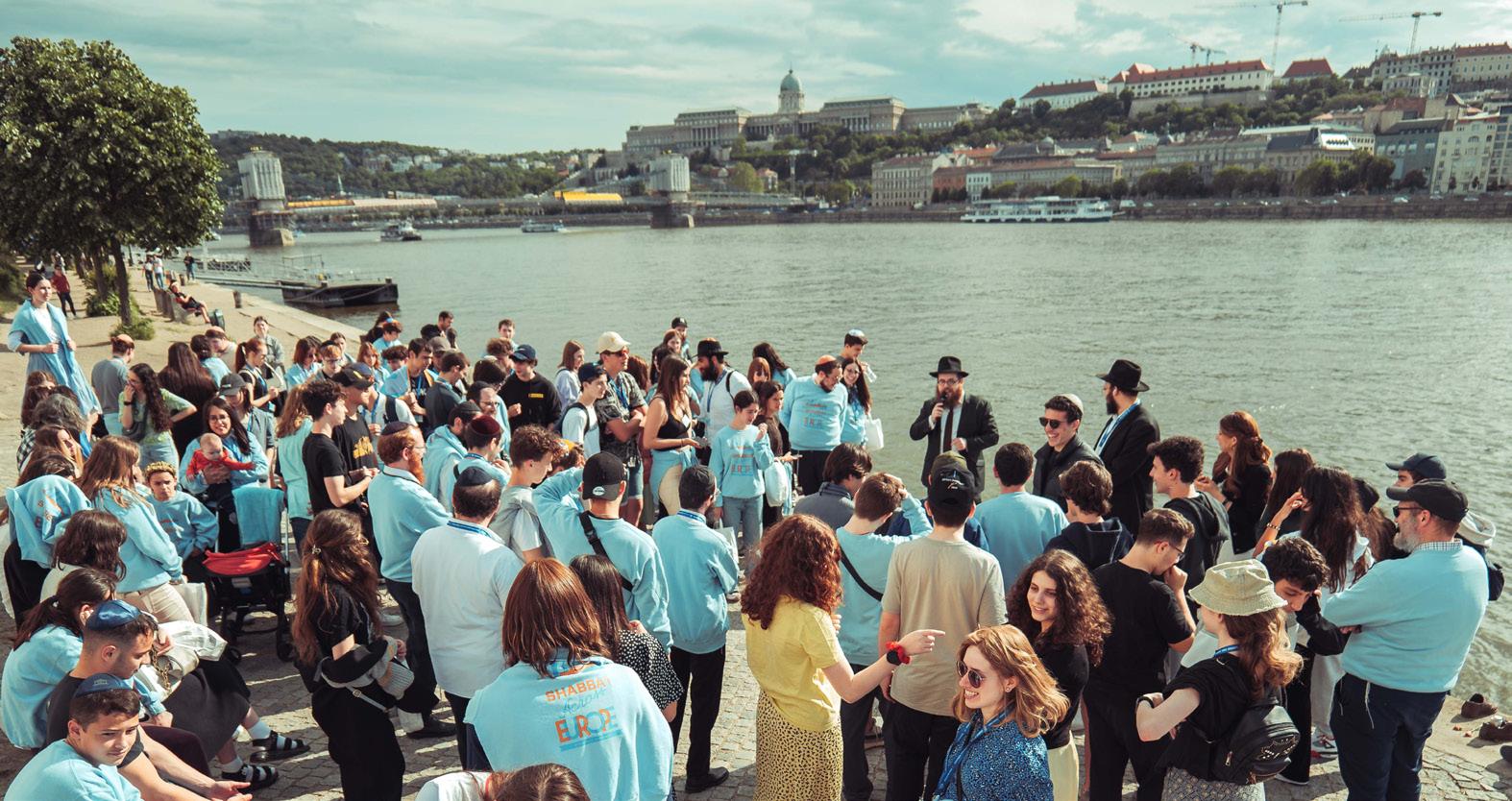
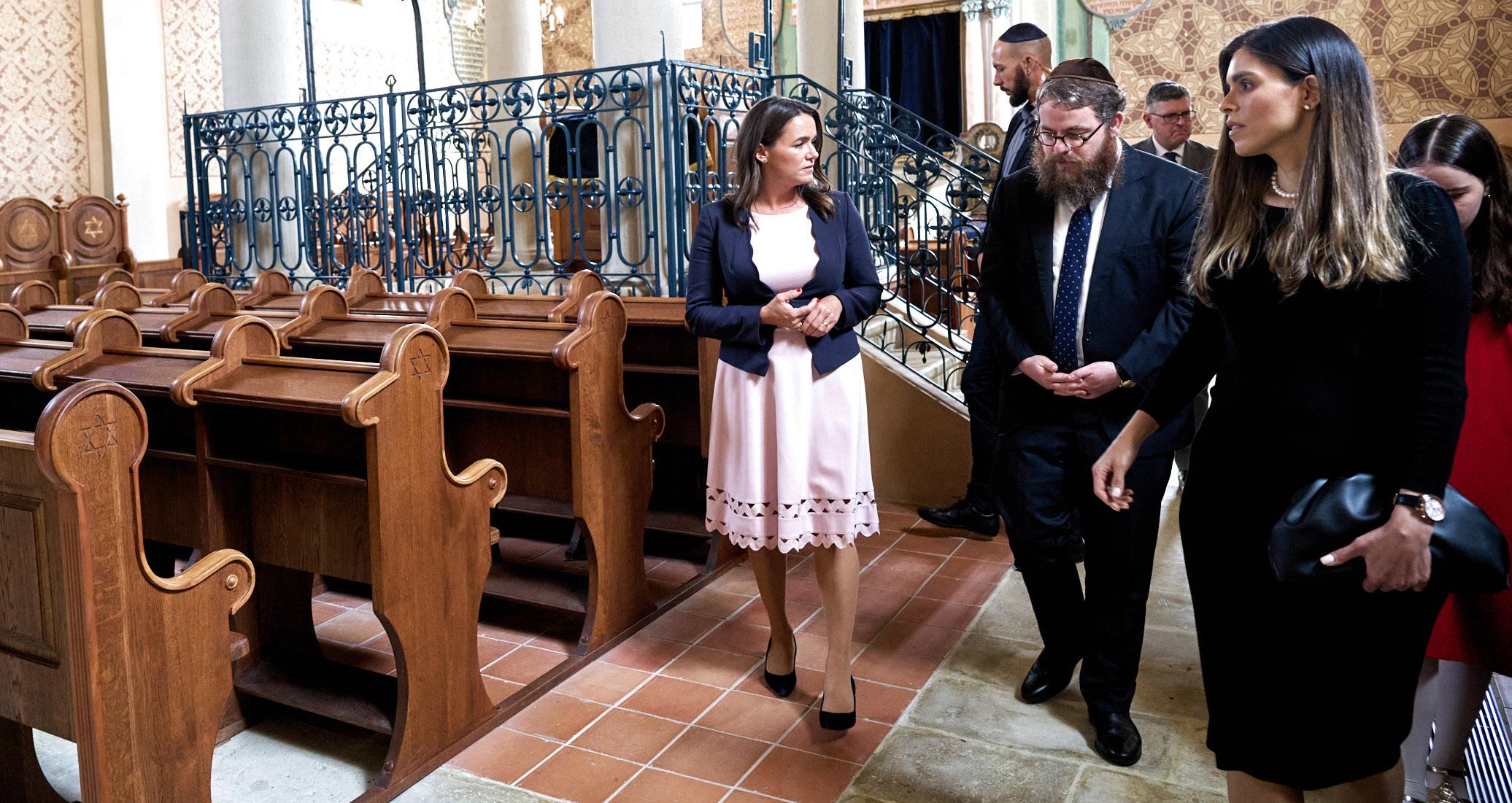
Keeping Jewish | November 2022 | 11
Hungarian president Katalin Novák tours the historic Mád synagogue accompanied by Chabad Rabbi Shlomo Koves
Jewish teens visit the Shoes on the Danube Bank Monument (Credit: Nándi Radnai)
Jewish refugees from Ukraine are welcomed at a synagogue in Budapest
I was 38 years old and pregnant, married and working full-time as the editor of a legal magazine in the San Francisco Bay Area. I was proudly Jewish but just loosely affilia ted with a Berkeley synagogue. The confir mation of a baby-on-the-way was the frui tion of hopes long deferred. An exuberance of my new state of body and mind punctua ted my life. I allowed nothing to disturb the feelings of happiness and the blessings of good fortune that had been unexpectedly visited upon me.
By Renee Skudra
I had always been a non-conforming per son, defiant about filling societal expecta tions. Now I would tread a foreseeably con ventional path filled with baby showers and physically preparing for a labor I secretly feared.
Judaism, in the background of my life, suddenly surged forward, seeming to in sist upon being part of the prenatal show. In passing, a friend shared that in Jewish thought, three things sustain the world: Torah, prayer and acts of lovingkindness. I
realized that I would require a great deal of sustenance, and began reading passages of the Torah, praying, and helping others as much as I could.
Then, my happy life imploded with terri fying long-term consequences. A normal, unremarkable pregnancy ended in an emer gency C-section. My pediatrician diagnosed my son with jaundice, an electrolyte imba lance, a thrombus in the brain, and conges tive heart failure.
Suddenly, my husband and I were con fronted with the specter of long-term hos pitalization in the pediatric ICU and the la cerating words from a team of 14 physicians that it was not likely that he would survive. My anger at the apparent injustice knew no bounds, aligned with a complete and unpre cedented loss of faith. Why would G-d per mit my son’s life to hang in the balance?
My husband had recently lost his job. He was despondent, and our marriage was foundering. Ultimately, he would abandon

| November 2022 | Keeping Jewish
12
STORY
The broken Star of David Why would G-d permit my son’s life to hang in the balance?
the two of us. He moved to Canada, and we were never able to find him. Family and friends retreated, too; they were overwhel med by the enormity of my son’s medical prognosis. I felt untethered in the world, and all my prayers were powerless to make my son whole. I measured my moments, an ticipating bad news certain to come to the tiny being residing on the fifth floor of the Oakland Children’s Hospital, tubes tied to his body, and constant doctors and nurses hovering over him.
Four months later, the chief cardiologist monitoring my son, Nils, called me into his office and said, “We are releasing him today. He has miraculously responded to therapies but is not completely out of the woods yet. There will need to be a lot of follow-up care and three weekly visits to various specia lists. But the good news is that you can take him home later this evening.”
As I sat there, I felt abject terror—that I wouldn’t be able to manage his medical care and any potential complications. When I said through my tears that my son had not even been expected to live and I was terri fied that he was still delicate and unviable, the doctor said the following: “The tenden cy of life is to continue. The Man Upstairs wanted this boy to survive.”
As I sobbed, he added: “All 14 doctors on Nils’s team called him ‘the champ,’ and we didn’t even realize that we were all calling him the same name!”
I couldn’t resist sharing that Nils means “champion” in Swedish, and he was named after my father, Nathan. “Natan” in He brew, means “gift.”
“Remember how very hard he fought to overcome the obstacles and survive,” the doctor added. “Your job is to fight equally as hard for him. Hold on to him with every ounce of your being!”
Minutes later, I left the hospital and went to grab something to eat. I was thinking about the bad deck of cards that I had been dealt (a desperately ill child whose future was still not medically certain, an indiffe rent family, significant financial problems, and a partner who had fled in the midst of our family trauma).
I parked my car and reached into my pur se for a quarter to place into the adjacent parking meter. Feeling somewhat dizzy and unsteady, I dropped the quarter, which fell to the ground at the base of the meter. As I bent to pick it up, I saw that under it was a very bent silver Star of David on a chain.
My first thought was of the irony that a Jewish person (me) had found it.
But a moment later, another thought came to mind. This bent Star of David was symbolic of my own broken faith that had dissolved when confronted with my son’s dire medical challenges. This symbol—tar nished and twisted, but for the most part intact—had entered my life for a teaching moment. I saw it as an admonishment of my temporary loss of faith. Faith belonged at the center, and I needed it to be what powe red me.
As I picked up that Star of David, I said the two Hebrew words that came to my mind “Modeh ani,” thank You, G-d, for my life!

It didn’t matter that this was traditiona lly a morning prayer. At that moment, I was thanking G-d that a random event—finding the Star of David—was returning me to a Jewish path that I had at least temporarily deserted. It was the epiphany I needed to believe that miracles were possible, and that my son’s life was one of those miracles.
I have cherished that Star of David. I have pondered from time to time whether I should get it straightened, but I always arri
ve at the same conclusion: I choose to wear it in the twisted and bent shape I found it.
It is a reminder of the reincorporation of the Divine in my life, of which Judaism is an inalienable and intrinsic part.

I am happy to report that my son is doing well and recently received his second master’s degree in library and information systems at the University of North Carolina in Greensboro, North Carolina. He is a Civil War historian, and his first book was publis hed in Blacksburg, Virginia, near where the American Civil War once raged.
I will never forget the lesson of that sim ple piece of Judaic jewelry, and when I am not actually wearing it, I keep it on my desk so that it is always near me—the same desk where I write my pieces, which I hope will provide warmth and inspiration to those who chance upon them.
Einstein once said, “G-d doesn’t play dice with the universe.” I agree. Finding that Star of David was meant to happen, orches trated by His Divine hand.
- Renee Skudra is a graduate of the University of California, Berkeley, and picked up a JD (law degree) along the way, but her heart’s passion is to write and see her work in print
Keeping Jewish | November 2022 |
13
HUMOR
The 3-day diet
This experiment didn’t go as planned
Photo: Diana Polekhina Unsplash
One of the big things about having a month full of Jewish holidays is that along with the praying and shopping, and cooking comes the part I love the best – the eating. But those holidays end at some point, and then I feel compelled to consider thinking about maybe, perhaps, possibly, going on a diet.
The last time I wrote about my weight was when I was trying to shed some pounds for my brother-in-law’s wedding. I promised to do a follow-up article if I lost any real weight. And you’ll be happy to know that I kept that promise. There was no follow-up.
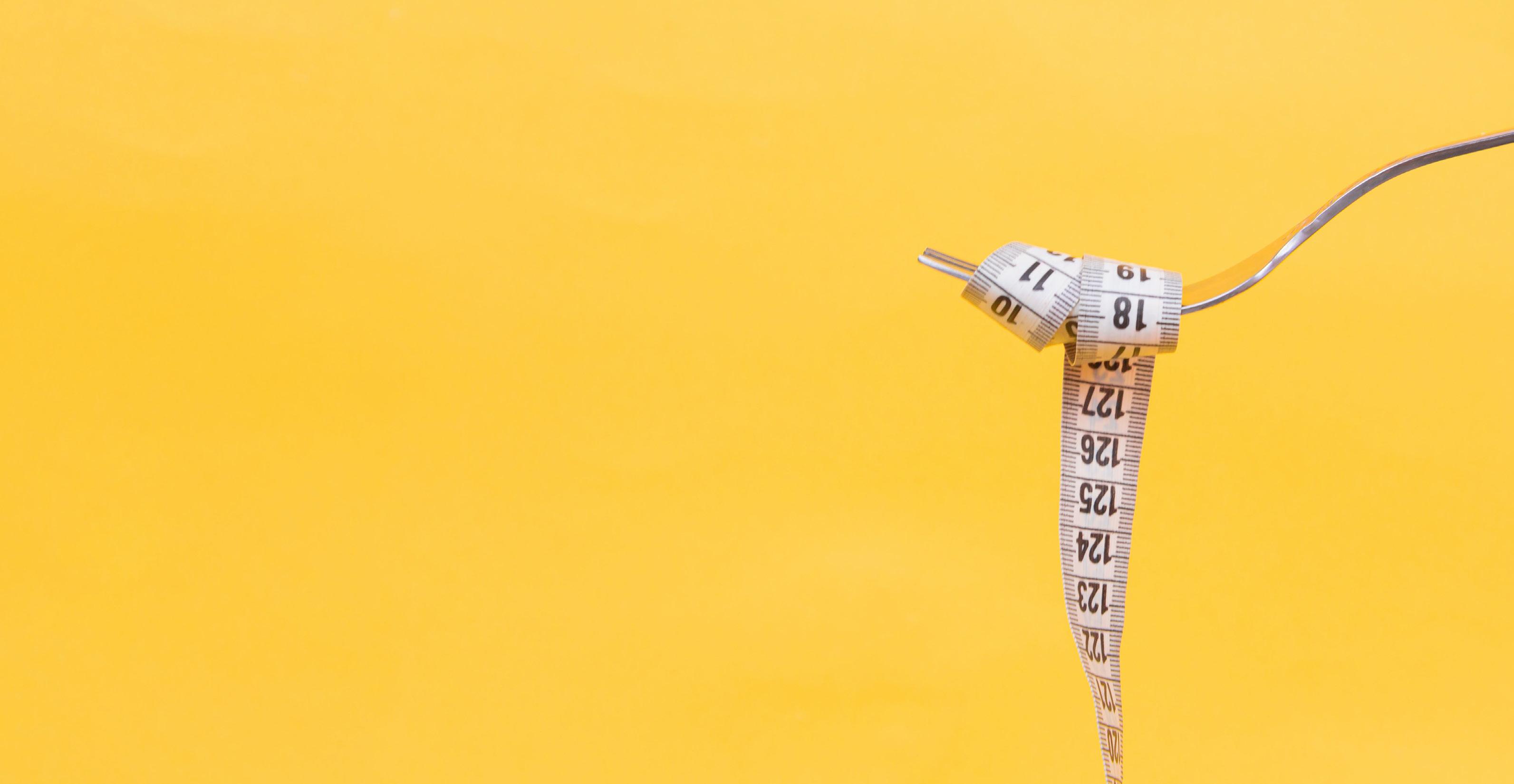
For the wedding, I went on a 3-day diet. 3 days. It’s like a 3-day holiday, except you hardly eat.
I tried the 3-day diet as an experiment be cause I’m okay with a diet if it’s really only for 3 days. I can do 3 days in my sleep. Li terally. I can just sleep for 3 days. Well, no, I can’t. I have my 6 jobs. I can’t take 3 days off of life. Still, I gave it a try. I took notes of my journey.
DAY ONE
By Mordechai Schmutter
enough room for my 3 ounces of chicken. Or my half a banana.
- This diet lets you have way too little of certain things and way too much of others. Right now, I’m having a single, lone piece of toast with two tablespoons of peanut butter. I can’t even find the toast.
- Ran into my first major snag. Tonight, as part of supper, I’m supposed to have 3 ounces of chicken on the bone, a serving of vanilla ice cream, and half a banana.
1. How on earth do I measure 3 ounces of chicken on the bone? Is that include the bone? How much do bones weigh? I can’t believe I’m actually weighing the bones. I don’t even have a tiny scale. I have to step on my bathroom scale with a chicken bone and then again without it.
2. I’m not blowing my one serving of vani lla ice cream on the non-dairy stuff. So do I have a six-hour break in the middle of sup per, as Jewish law requires before having dairy? Or should I have the ice cream first? If I eat the ice cream first, I might not have
I cannot remember what I did – I was faint from hunger when I made my decision.
DAY TWO
- The second half of my banana is brown.
- Lunch -- a full cup of cottage cheese. This is the most cottage cheese I’ve ever eaten in one sitting in my life. I better lose weight from this.
- Licked off the cottage cheese plate. I haven’t licked off a plate since I was a kid, but hey, one cup is one cup. I also licked the cup.
- This is the slowest I’ve ever eaten crac kers.
- If I eat all 3 days’ worth of food in one day, can I lose the weight three times as fast?
- Okay, for supper tonight I get 2 hot dogs. But no buns. Because buns were clearly the problem...
- Is there a point in experimenting with this diet if I forgot to weigh myself before I started?
Well, that didn’t matter anymore. Hal fway through Day 2, I found out that I was designated to make a pre-wedding birthday party for my brother-in-law. The diet went straight out the window. I ate more food than I knew I could actually eat in one sit ting. I had 2 wraps, a deli sandwich, several kinds of salad, and a piece of chocolate cake. So glad I hadn’t weighed myself before star ting the diet!
All in all, I feel like I got far enough in the diet to know that I wouldn’t recommend it. That’s because mathematically, if it’s pos sible to lose 10 pounds in 3 days, it’s also possible to gain 10 pounds in 3 days. That’s terrifying. I’d rather live in a world where neither is true than where both are true.
| November 2022 | Keeping Jewish
14
dogs. clearly the with before I Hal I was birthday went food one sit several cake. star enough in recommend it’s pos it’s also That’s where true.
The Jewish daily routine quiz
By Menachem Posner
1. What prayer is said each morning before even rising from bed?
A. Modeh Ani (“I Thank You”)
B. Shema Yisrael (“Hear O Israel”)
C. Mizmor Shir (“A Psalm, a Song”)
2. Where is the ideal place to wash one’s hands in the morning?
A. At the synagogue sink, which draws pure, untainted well-water
B. The place does not matter as long as the shades are drawn
C. At the side of one’s bed, using a basin and cup set out the night before
3. How many prayers are said on a regu lar day?
A. Three: Morning, afternoon, evening
B. Four: Morning, midday, afternoon, evening
C. Five: Early morning, mid-morning, midday, afternoon, evening
4. On which special days on the Jewish calendar do we not put on tefillin?
A. Shabbat
B. Rosh Chodesh
C. Chanukah
5. Before eating which foods must one wash hands?
A. Nuts, dried fruits and berries
B. Any meal containing bread
C. Food that has been left out overnight
6. Which excerpt from the Torah is said every morning and evening?
A. Shema Yisrael
B. The Six Remembrances C. The 10 Commandments
7. How many blessings should a Jew strive to say every day?
A. 36 B. 60 C. 100
8. What does a Jew do after using the bathroom?
A. Wash hands and say a prayer of gra titude
B. Make sure the lights are turned off C. Write down the time of day in a note book.

9. Before which activity is NO blessing said?
A. Eating and drinking
B. Smelling fine herbs
C. Spinning a Dreidel
10. Which mitzvah should be done “mor ning and night”?
A. Tithing from fresh bread
B. Torah study
C. Greeting others with an encouraging smile
Answers:1-A,2-C,3-A,4-A,5-B,6-A,7-C,8-A,9-C,10-B
Thanksgiving word game
Can you match the language with its expression of thank you?
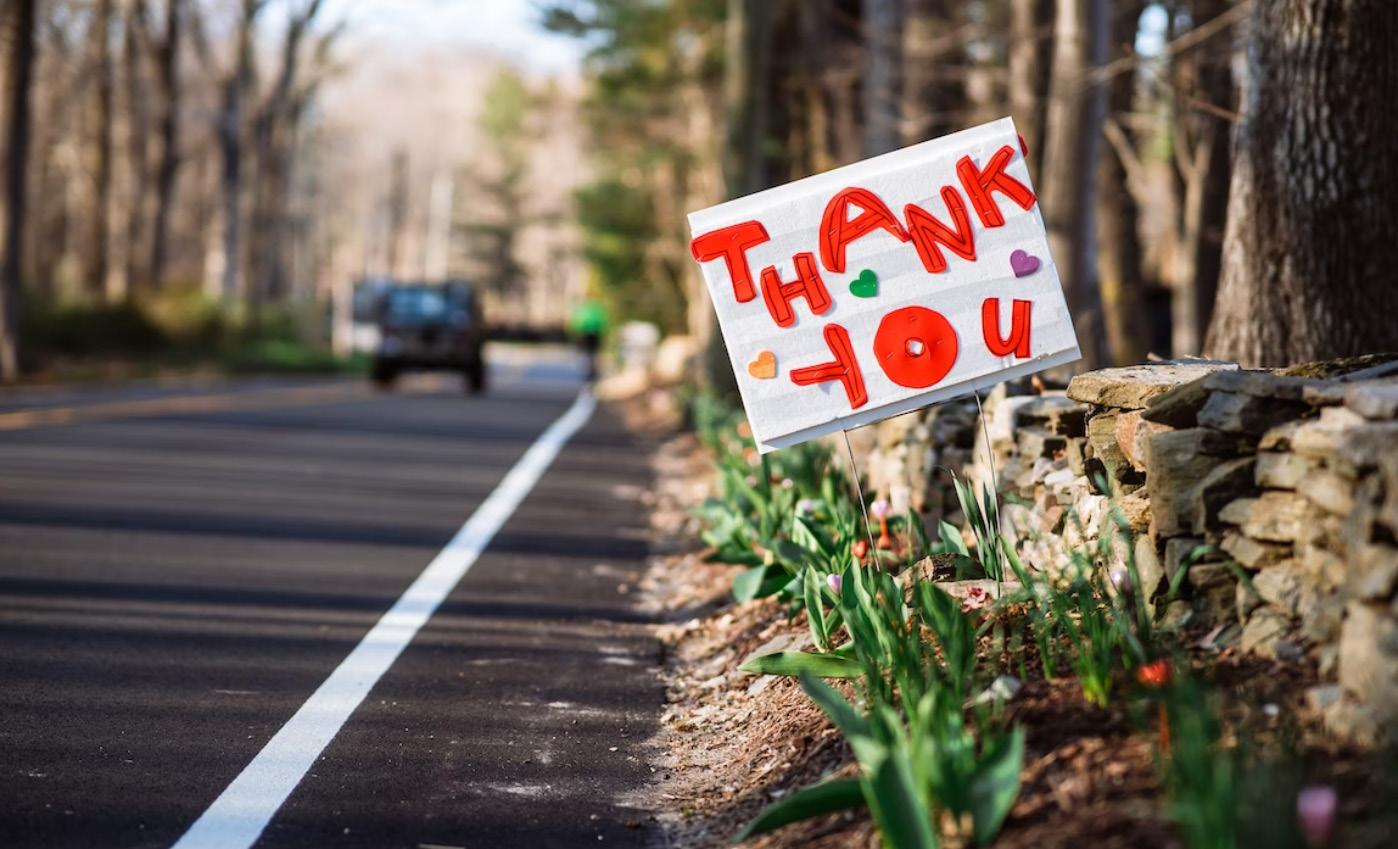
Arabic Finnish French German Hebrew Hindi Hungarian Italian Japanese Korean Mandarin Norwegian Portuguese Russian Spanish Turkish Yiddish
Sukria Danke Merci Kiitos Gracias Shukran Tesekkür ederim Grazie Obrigado Xie xie Spasiba Takk Arigato Kamsa hamnida Toda Ah-dank Köszönöm
Keeping Jewish | November 2022 |
Answers:Arabic-shukran,Finnish-kiitos,French-merci,German-danke,Hebrew-toda,Hindi-sukria,Hungarian-
köszönöm,Italian-grazie,Japanese-arigato,Korean-kamsahamnida,Mandarin-xiexie,Norwegian-takk,Portuguese-
obrigado,Russian-spasiba,Spanish-gracias,Turkish-tesekkürederim,Yiddish-ah-dank.
15
FUN PAGE
Photo: Diana Polekhina Unsplash
Photo: Nicholas Bartos / Unsplash


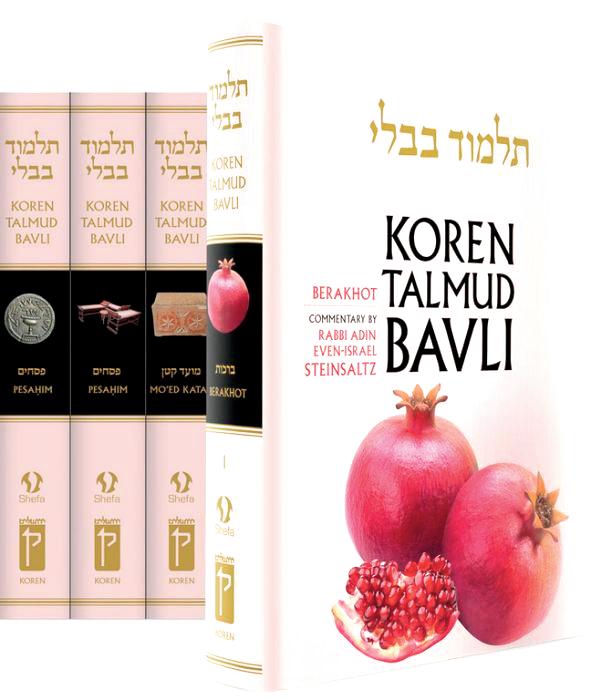

Only 1900 tickets will be sold $100 = 1 ticket $900 = 10 tickets $1,800 = 21 tickets $5,400 = 60 tickets Raffle benefits Lamplighter Chabad Day School R o l e x D a y t o n a Y e l l o w G o l d & l e a t h e r - b o u n d J e w i s h b o o k s 1stPrize 4 2 v o l u m e K o r e n S t e i n s a l t z T a l m u d ( o r $ 1 , 8 0 0 g i f t c e r t i f i c a t e ) 2ndPrize Timeless & Time R A F F L E BH ChabadTucson.com/Raffle DRAWING DATE: CHANUKAH 5783/2022











 By Benjamin Weiss
By Benjamin Weiss








 By Feigie Ceitlin
By Feigie Ceitlin



 By Menachem Posner
By Menachem Posner












